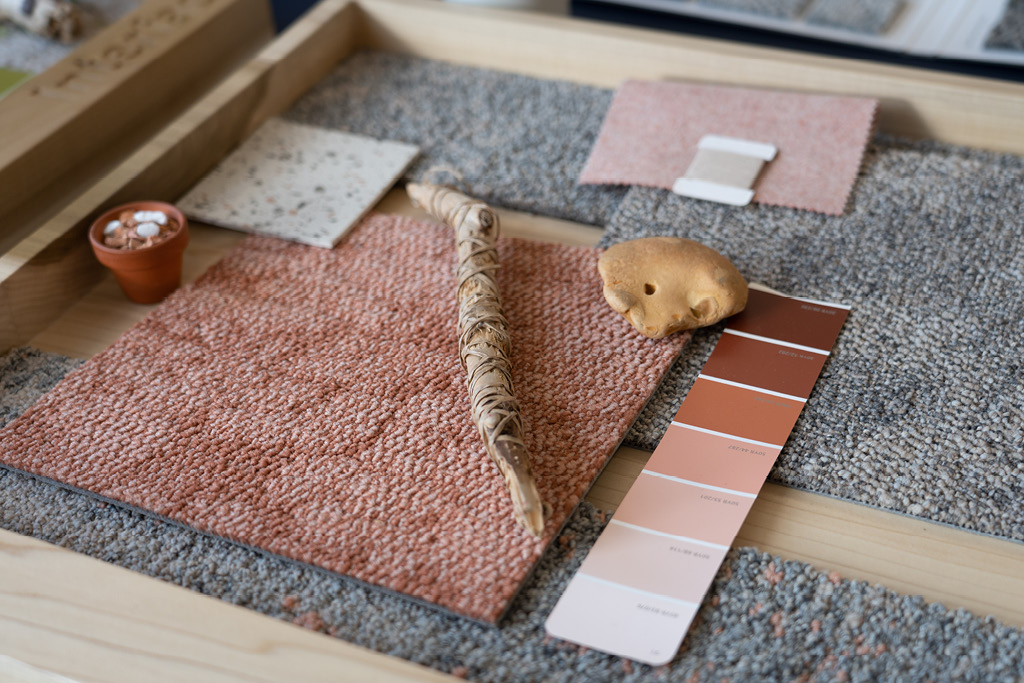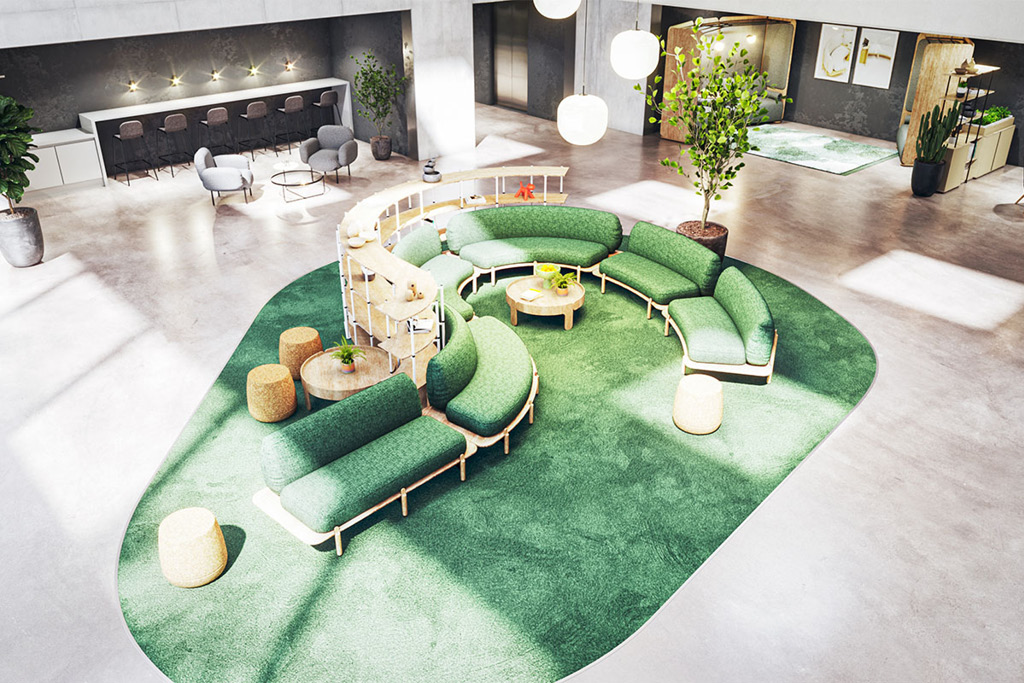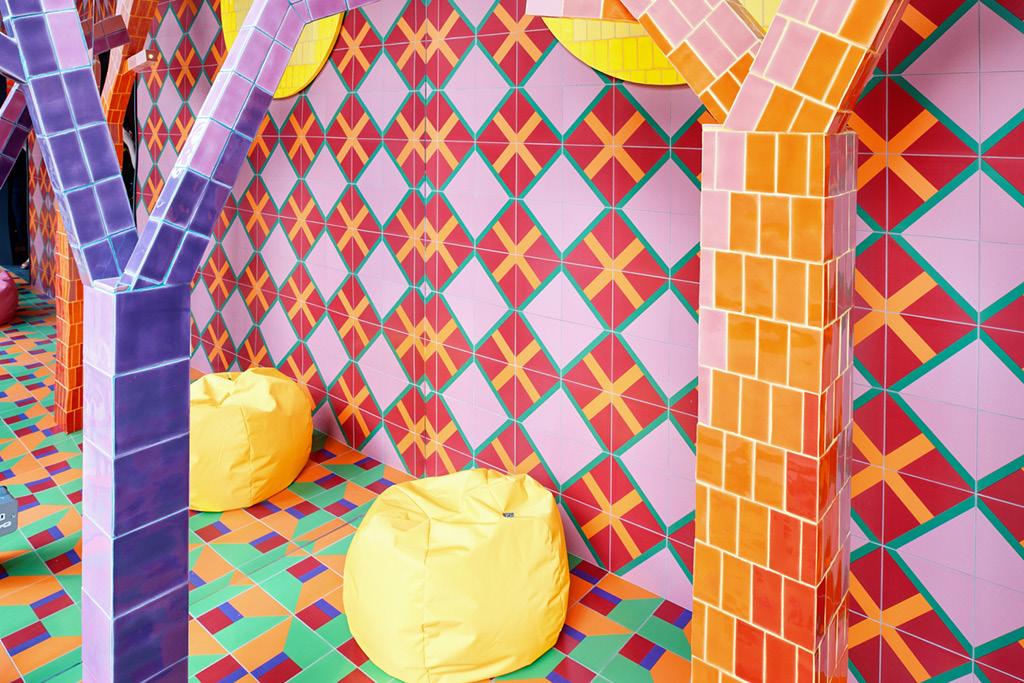Clerkenwell Design Week was another successful one for Interface, as we previewed new collections and led conversations on the shift from design focused on humans to that which puts all life at the centre – all from our beautiful Pennybank showroom in the heart of Clerkenwell. It was a whirlwind week of fascinating discussions and pressing questions on the what the future holds for our industry, as well as an opportunity to see trends we’ve been monitoring brought to life in beautiful products and installations.
Here, Laura Light, our Concept Design Team Lead, shares her predictions for the key trends we can expect to see in commercial interiors throughout the rest of 2023.
Flourishing Biophilia
It’s no surprise that biophilia continues to guide much of the design witnessed at Clerkenwell. New, tactile materials are appearing as designers embrace all five senses, including touch, as a new way to establish connections with the natural world and unlock the boost to health and wellbeing that nature can provide.
For example, Upon Common Ground, our new collection which we previewed at the festival, takes inspiration from the deep connections that First Nations communities in Australia have with the natural environment. Someone living in the Australian outback has a different vision of nature to someone living in the English countryside, and the new collection recognises this by embracing the colours of deserts, cliffs, trees, and water. Designers can now embrace biophilia without restriction.
Maximalism Meets Resimercial
We’ve been watching the maximalism trend as it booms post-pandemic, but at Clerkenwell we saw it applied to commercial interiors like never before. The challenge of bringing people back into spaces like the office has given designers license to be bold with what they’re offering. Furniture designers are striving for extreme levels of comfort that take the Resimercial trend to the max to soften commercial environments. This groundbreaking furniture features flamboyant curves and abstract shapes that challenge our understanding of what’s possible with furniture design. The Bae modular seating system that Frovi showed at Clerkenwell is a smart and sustainable example.
Likewise, diversification of the workplace requires careful acoustic division, and designers are unleashing their creativity when creating acoustic features. Wall hangings, lighting fixtures and flexible features came in all different shapes and sizes, and often drew on existing trends including biophilia as engaging centrepieces that also serve a practical purpose.
Brands are taking maximalist approaches to colour too, with unapologetically bold and bright designs. The Yinka Ilori x Domus tile collection was the standout example here, with this geometric collection shown in all its glory in the Domus showroom in ‘A Magical World’ installation.
Talking Colour
While earthy and pastel tones remain popular, designers are beginning to use and combine colours in ever more creative ways. One trend that we enjoyed seeing come of age at Clerkenwell was the use of the full spectrum of one colour in varying tones, within one design. Often done in tandem with varying textures, Schotten & Hansen and Solus were two brands that used this style of subtle clashing in their work.
When it comes to flooring, biophilia remains a driver for colour choice, but one trend that Interface has long bought into is colour’s ability to truly change the way people interact with a space. Colour plays an important role in defining the flow of a room and highlighting the purpose of different areas. Modular flooring gives designers freedom to get creative with how they use colour, creating an inset rug within the carpet design, for example. The real power of colour only becomes clear when you think beyond aesthetics.
Developing Digital
AI and digitalisation are going to transform pretty much every industry out there, and design is no exception. Design needs to work out where it stands and where to go next, because there’s no stopping digital domination. This will be a big question in years to come, and the answer will bring exciting new opportunities.
Clerkenwell was a great success for Interface this year, but also for a commercial design industry brimming with creativity. These emerging and evolving trends are just scratching the surface of what we have to offer – the future looks bright and beautiful!
For more information about Interface’s activity at Clerkenwell, click here: https://www.clerkenwelldesignweek.com/exhibitors/interface-europe-ltd.


